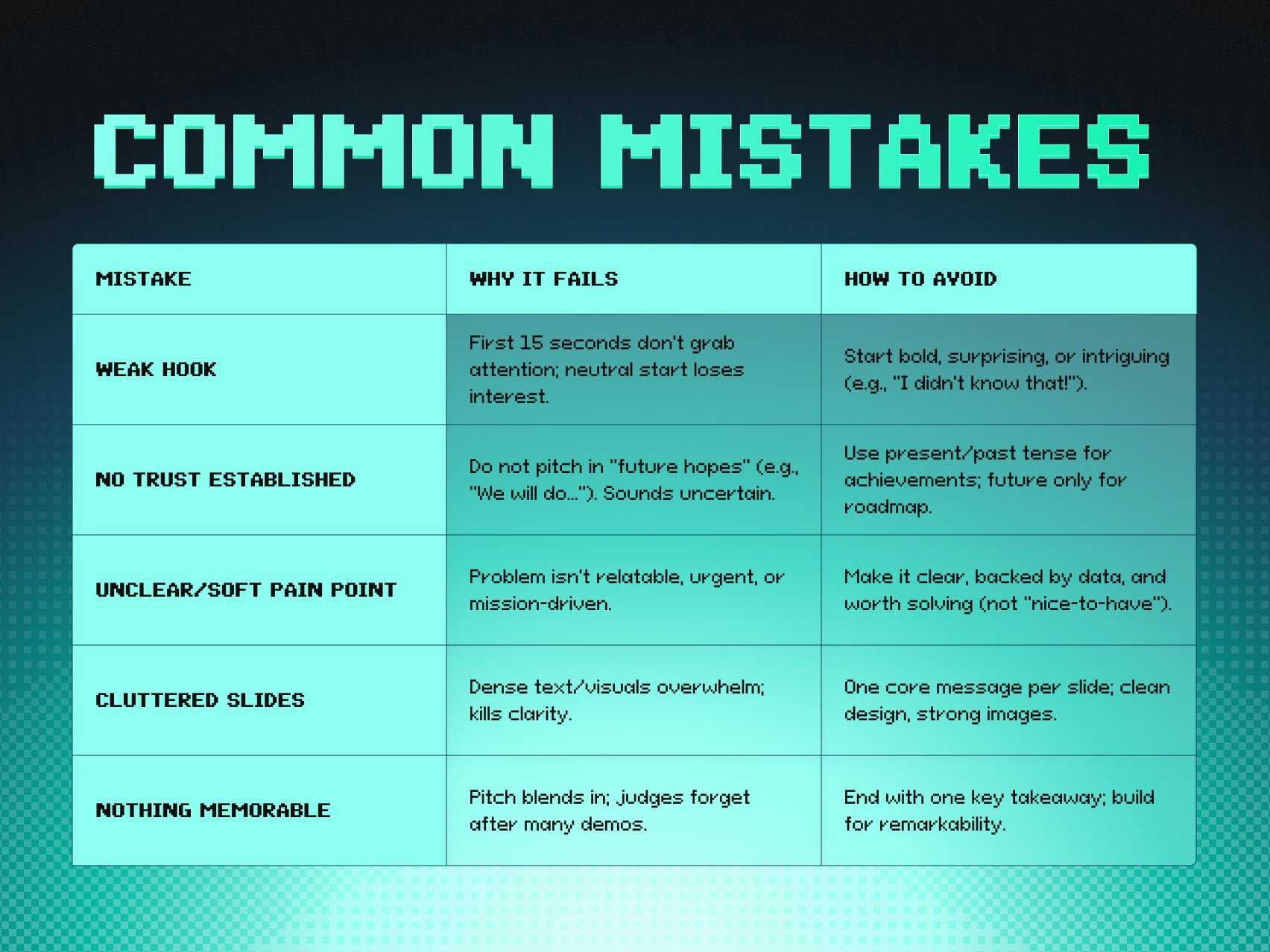the DePitch movement is growing - hear it from the community
The builders who win hackathons know something 99% don’t.
It's not just what you’ve built, it’s how good you pitch it.
At DePitch, we’ve cracked the pitch code,
steal our 10 secrets, make it count

One pitch. One chance to win.
It’s the one moment to prove what weeks of hard work have built.
No second take.
No “let me explain later.
You pitch defines how your entire team is judged.
Set your intention. Schedule your prep and rehearsal slots. Your road to winning a hackathon starts now.
Follow what's coming below to make your pitch un-for-gett-able.
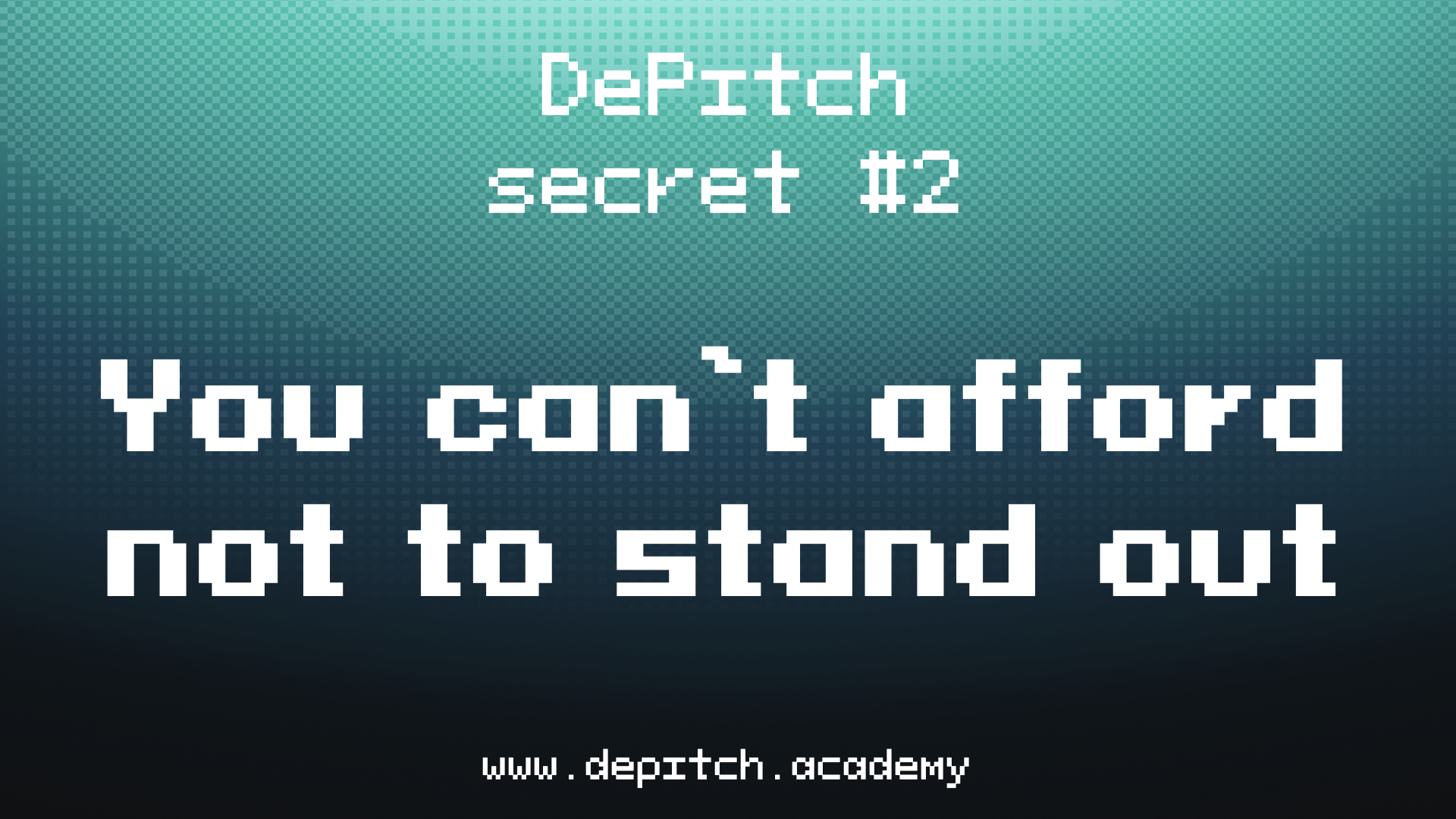
Think about this: you're possibly competing against 1000+ projects.
Judges are human, likely much less easy to engage after they hear pitch #30
And that's fine, it's just the nature of the game.
You need one unforgettable element: a striking line, a great demo, a unique hook, a memorable story.
Give the judges the value and reward they deserve.
If they choose you, it’s because they saw something that could shift the Solana ecosystem.
Make their attention worth it.
If you choose to play it safe, you have already lost.

"The slide-by-slide structure" is in the image below.
Steal it. Adapt it. Make it yours.
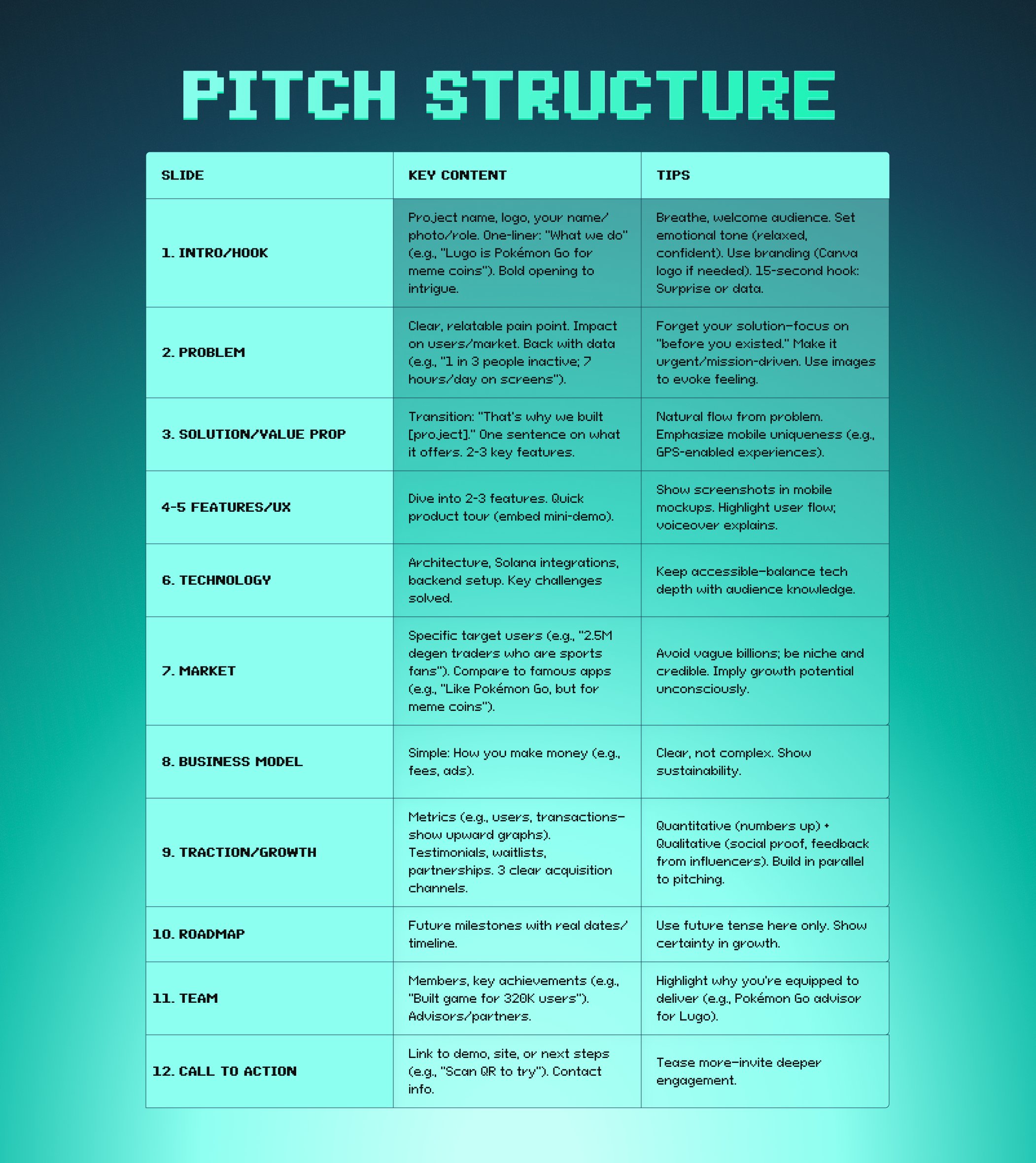
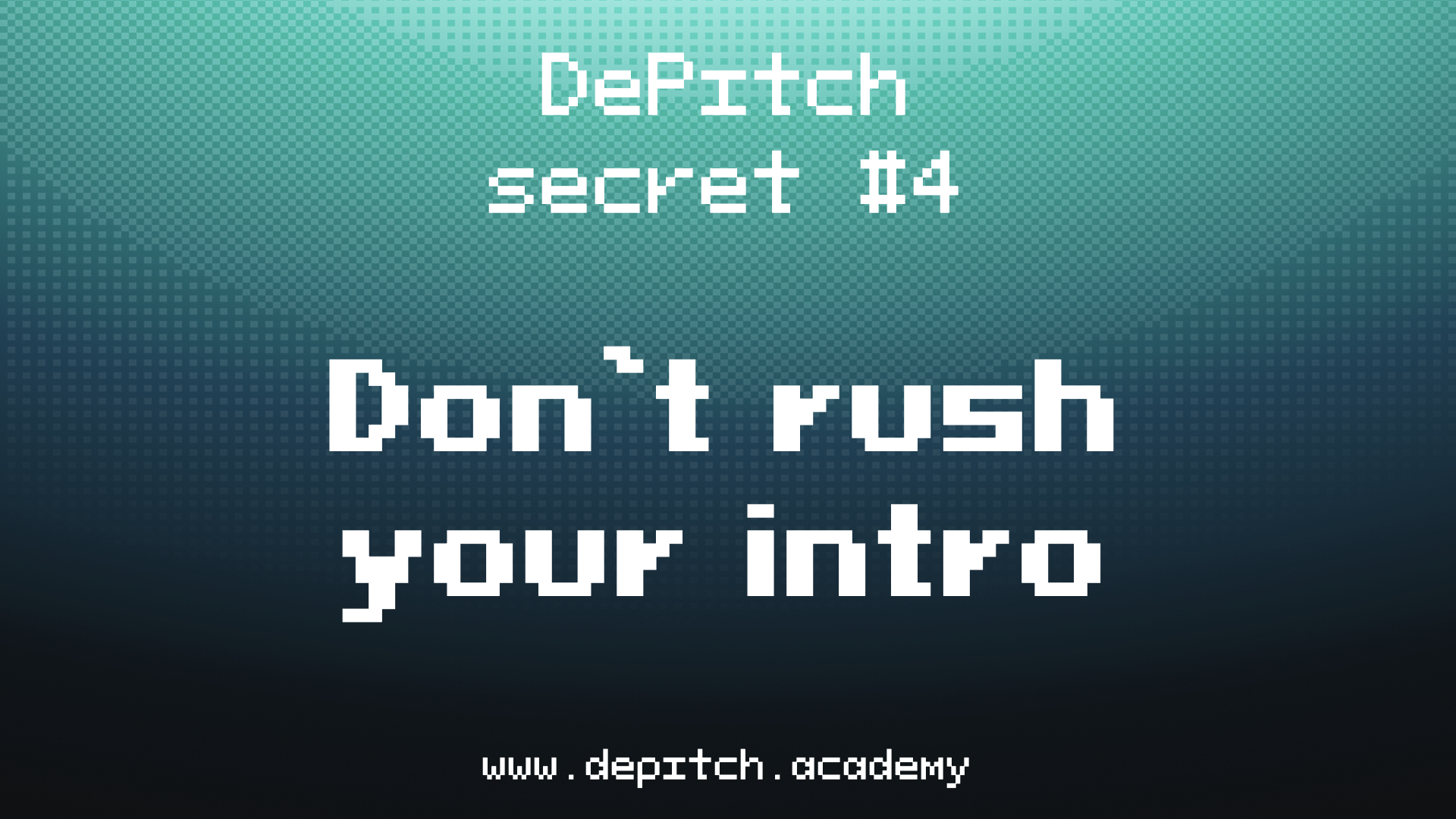
Don’t sprint from a quick hi to product features.
Warm your audience up: they are entering your world for the very first time.
Breath... and slowly let them connect with you and your brand:
• Hi, I’m / my name is [insert name],
• founder of [insert company name]
• Today, I’am going to show you how [repeat company name] is solving [insert problem OR value proposition]
Then you start… with the problem you solve
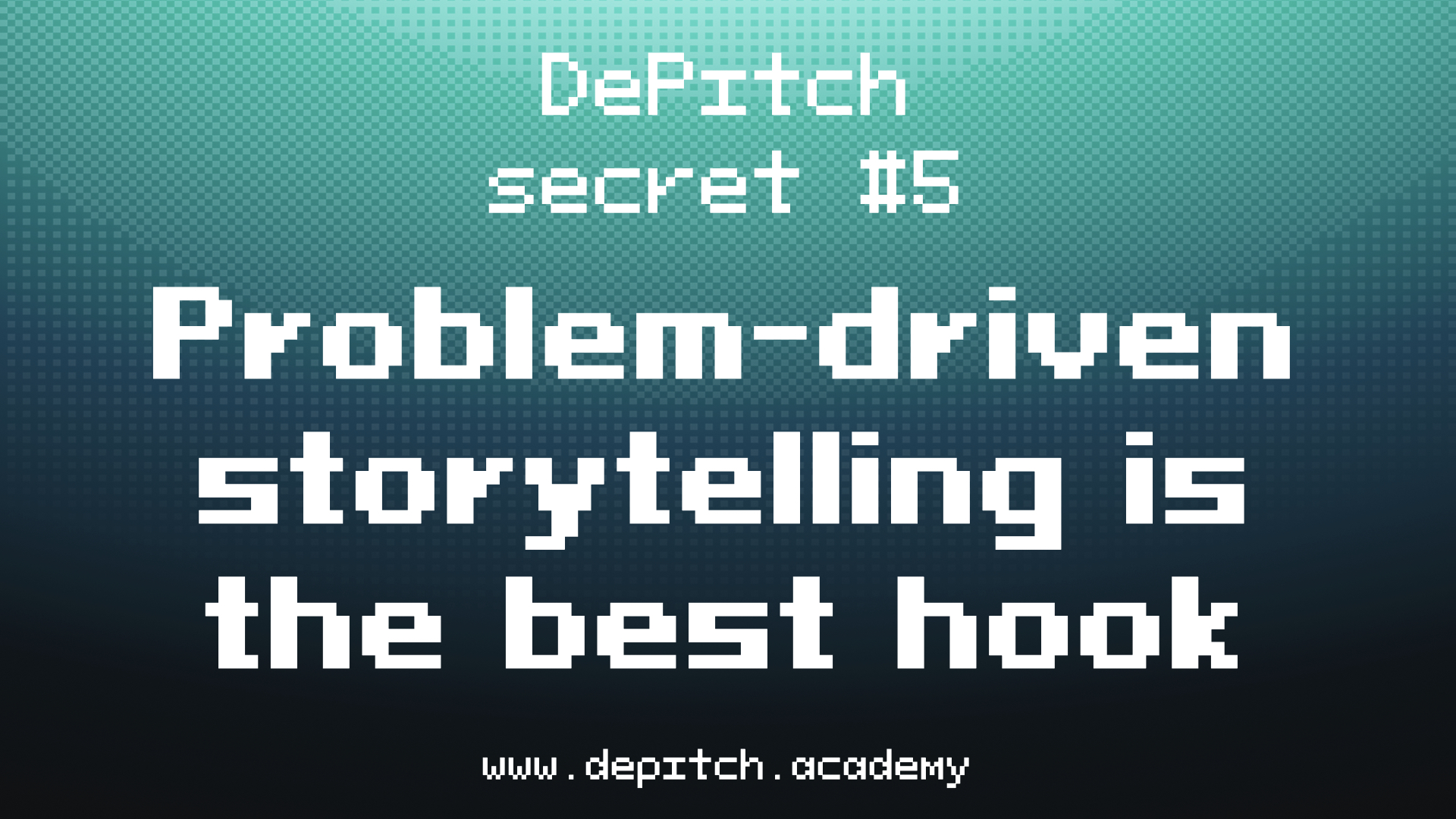
Don't start with your product or your team.
Start with what *hurts*.
Tell the story of a user in pain: lost time, broken flow, missed opportunity.
Make the judge feel the problem.
Then show up with the fix.
You need 2 things in this slide (or break it out in 2 slides):
1. The problem you solve: niche? unexpected? Even better.
Audiences love to learn something new: make it relatable with a smart comparison to win your hook.
You’re dealing with it everyday so it sounds natural to you, yet don’t assume the audience know
2. The consequences of this problem: what does this pain cost? Time, money? Back it with data.
If your claim sounds vague, you lose trust… and attention.

Your pitch isn’t a checklist, it’s a story.
Every slide should come after the previous one naturally, not as a list of items.
Use transitions like:
• “And that’s exactly what we’re solving.”
• “Here’s where it changed.”
• “That’s when we decided to build DePitch.”
They will make your pitch consistent and your solution obvious.

Judges back startups, not side quests.
Show how you make money.
Show how you scale.
→ Who pays?
→ How often?
→ Why can this grow 10x?
You should also show evidence you did your market research homework:
→ How big is the market?
→ How fast is it growing?
→ Who else is in the race?
Don’t just say “we’re different.” Prove it.
Position yourself clearly.
Back it with data or competitive analysis matrix.
Market insight = founder credibility.

Not all numbers are equal.
Choose data that proves people care:
→ Active users
→ Revenue
→ Usage growth
→ Public testimonials
→ Stakeholders putting money or trust in you
Traction is not “we’re getting there.”
It’s “they already showed up.”
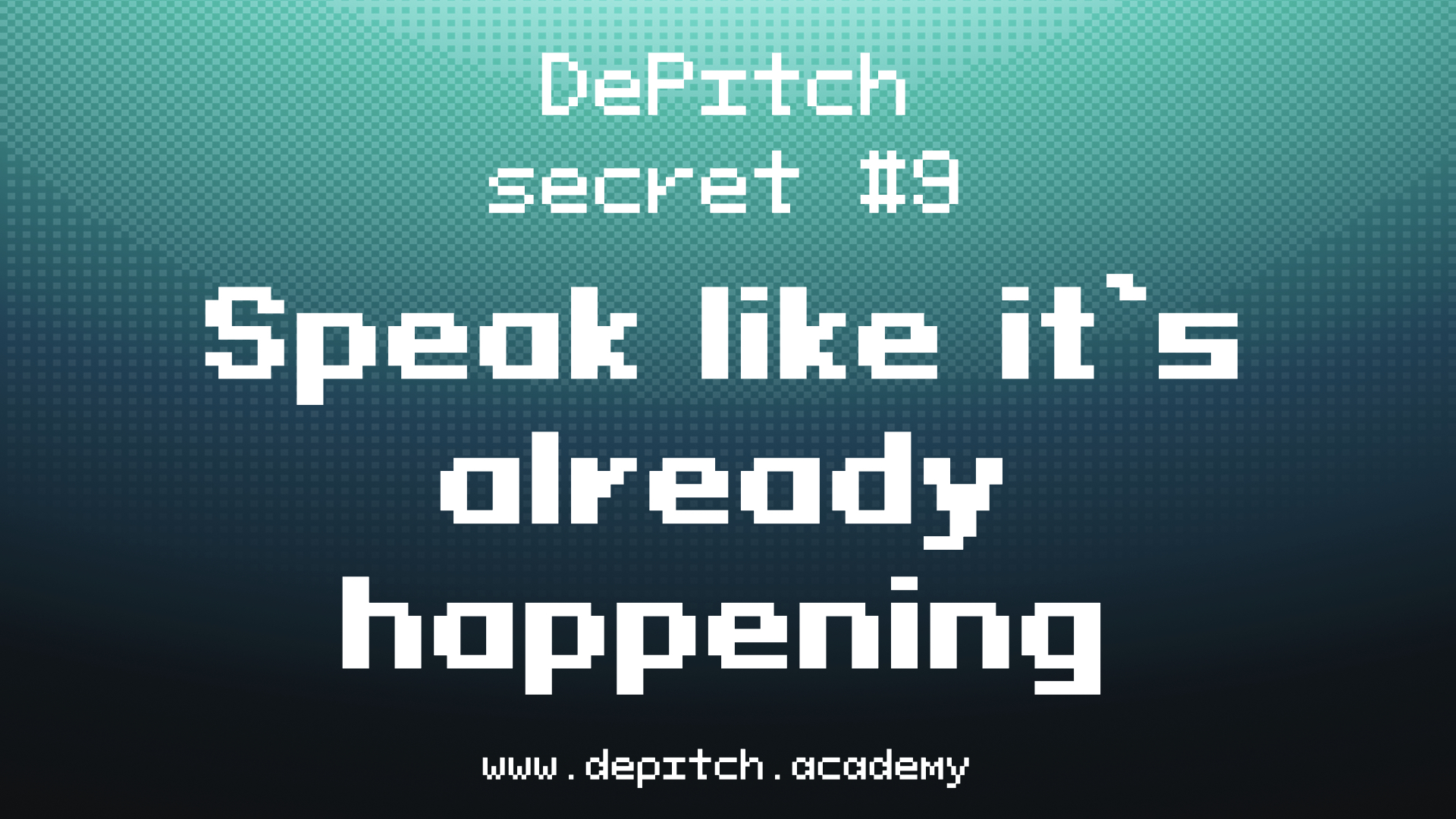
Avoid:
“We’re trying to solve…”, “We plan to…”
Use:
“We solve…” , “We’ve built…”
Present tense shows confidence.
Future tense sounds like a wish.
Don’t just pitch potential.
Pitch momentum.

If you haven’t:
→ Timed yourself
→ Rehearsed transitions
→ Practiced out loud
You’re not ready.
This is your last shot to turn hard work into winning this hackathin.
Package it right.
Deliver it sharp.
Let them remember your name.
FORWARD, LEGENDS!
Want to go further?
Signup to DePitch Academy https://www.depitch.academy/academy, a 6-module online course that let our alumni claim 13 Colosseum prizes and earn more than $ 1M in grants and pre-seed.
bonus tip: pitch common mistakes to avoid
